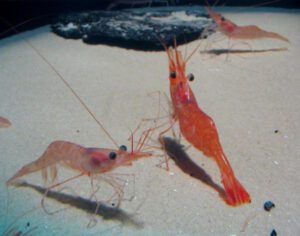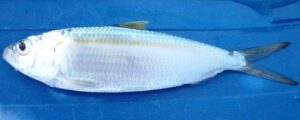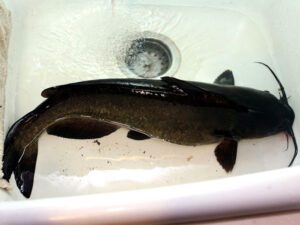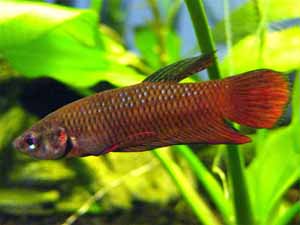Before discussing about pond management, we have to know about what is a pond? Generally a pond means a small body of still water formed naturally or by artificial means. Pond is seen almost all areas around the world. It is mostly seen in the village area. Some are also found in city areas. People use the ponds for different purposes. Most of those ponds are used for fish cultivation. Almost all types of freshwater and saltwater fish can be stocked and cultivated in the ponds. Successful fish farming business depends on good pond management and ecosystem. The source of water can be a river, lake or other natural ways like rain water and underground water.
Water sources can be different but you must have to have the facilities of changing water weekly or monthly, or as per demand. It will be better if the pond has the facilities of changing water after every two to three months. You have to fill the pond with water on a regular basis for highest fish production (you will notice loss from evaporation or seepage). Changing water fully is not recommended. Changing 10% to 50% will be good or as per the suggestion of an expert.
Exact size of the pond can vary. It can be a very small one or a pond of numerous hectares. Small pond designs are made for meet up family fish consumption. On the other hand, the larger pond are made for commercial purposes. Pond around one acre is easy to maintain. However, here we are gong to describe more about pond management, pond construction, pre and post stocking tasks.
Pond Management And Construction
Before starting pond construction, you have to keep in mind about the pond culture, pond design, pond management and the pond supplies system. Natural resources, condition, weather and available equipment are the main considerations to look before building a pond. You can construct your pond in the areas where you think commercial fish farming is possible. Shape of the pond can be any. It can be square, rectangular or any other shape, but you have to make sure that it will be free from unwanted water filling from other sources and also ensure water loss.
Keep adequate water depth, depending on the fish species you are growing. Less than 1 meter depth is not suitable for culturing any fish species. You have to monitor your pond 24 hours. You can keep a guard or install camera system, otherwise thieves will do their job smoothly. Another way available (used in India and Bangladesh) to keep your fish free from thieves. You can keep bamboo poles or tree branches with thorns in the pond. It will be impossible for the thieves to collect fish with net.
The bamboo poles and tree branches will not only prevent the fish from being theft but also will serve the fish some extra natural foods. This system is generally known as periphyton based fish cultivation. Don’t construct ponds for commercial purpose where transportation system is not good and fry/fingerlings are rare. Try to make the pond ecosystem friendly for fish growth. Ensure adequate amount of sunlight. You can let different types of ducks to explore the pond and the ducks will help making sufficient oxygen supply for the fish. You can use either manual or mechanical methods for constructing the pond depending on the availability of constructing system in your area.
Step 1: Determine The Size of the Pond
The size of the pond depends on your farming type and it’s a very important part of the pond management system. If you want to cultivate fish to meet up your family needs, then you can start in a small pond. If you want to cultivate fish commercially, then you have to make a large one. The pond can be both square and rectangular sized depending on the land type. Square and rectangular sized ponds are easy to build and manage. A pond with an area of 250-300 square meter is considered ideal for family fish consumption. But In commercial production, the pond size can be any. But it will be better if you limit the pond size within one acre for easy operation.
Step 2: Determine The Depth
Keeping water depth difference in one corner from another corner is a good idea. Depth of the water depends on the species of fish you are cultivating. The depth of the pond can be more if you want to use it for reserving water for the dry season. Minimum depth is around 1 meter.
Step 3: Determine The Fish Species
Determine the fish species you want to raise in your pond. Pond size and depth also depends on the fish species.
Step 4: Follow These Pond Constructing Tips
Pond constructing process is the most difficult and expensive part of fish farming business. You have to think wisely because it is a long time investment. Please consider the following factors while constructing a pond.
- Select a suitable place for making the pond.
- Determine the appropriate area of the pond.
- Make the shore of the pond strong.
- It will be better if there are no big trees near the pond.
- Make an inlet and outlet path.
- Make the pond fertilized before releasing minnow there.
- Build the pond near your residence.
- Stock minnow according to the area of your pond.
- Make the pond where at least one natural water source is available throughout the year.
- Determine the area of pond which you can maintain easily.
Step 5: Pre-Stocking Pond Management
Making the ponds ready before stocking fry/fingerlings is called pre-stocking pond management. You have to prepare the pond properly by removing the causes of poor survival, unsatisfactory growth etc. Along with this, also ensure ready availability of natural food in sufficient quantity and quality for the fingerlings/fry. Here we are trying to describe more about the pre-stocking pond management tasks.
A. Control Aquatic Weeds And Algae
Aquatic weeds are unwanted plants that grow within the water body and along the margins. Aquatic weeds consume a large quantity of nutrient from the pond and your fish suffer. That’s why it’s very important to control the weeds.
Water hyacinth, pistia are the common floating aquatic weeds. Very often they cover the entire water surface cutting off light drastically. And result in critical reduction in primary productivity of the pond.
Other common floating aquatic weds are water lettuce, water fern, duck weed etc. Common emergent weeds are banana water lily, fragrant water lily, lotus and floating heart. Hydrilla, najas, curly leaf pondweed and eel grass are some common submerged aquatic weeds.
You can control these aquatic weeds in many different ways. Most commonly used methods are manual control and chemical control.
B. Fertilization of Ponds
Adding adequate fertilizers is very important for producing enough food for the fish. Fertilization schedule involves application of both organic and inorganic fertilizers. Apply fertilization 10-15 days prior to stocking. Consult with your nearest fisheries institute or an expert in your area for having better recommendations.
C. Stocking
You can stock fry/fingerlings 10-15 days after applying fertilizers. Stocking of spawn, fry and fingerlings should be done very carefully to avoid any post-stocking mortality due to shock or infections. Do stocking preferably in the cool evening hours.
Step 6: Post-Stockting Pond Management
Post-stocking pond management involves harnessing the pond productivity in the form of natural fish food, maintenance of pond environment congenial to the cultivated fish and fish husbandry, mainly feeding and health care.[1]
A. Feeding
Feeding the fish with good quality and nutritious food is the most important part of commercial fish farming business. Soon after stocking, the fish start grazing natural food available in the pond. Spawn feeds voraciously on plankton. Therefore, take immediate steps for providing supplementary feed. Ready-made (commercial) feeds are available in the market. Or you can also make the feeds of your own.
B. Periodic Fertilization
The next step in post-stocking management is the periodic fertilization. It ensures replenishment of nutrients and consolidation of the energy base for microbial decomposition activities.
C. Monitoring Pond Environment
Monitoring the pond environment is also a very important factor of pond management. And proper pond management involves a regular steady supply of nutrient.
The supply of nutrients could be from within the pond itself or from outside. You also need to regulate the physico-chemical parameters of the pond ecosystem within the safe tolerance limit of the cultured fish species.
Check water and soil quality on a regular basis. Decrease the amount of supplementary food if you notice the presence of too much natural food in the pond.
D. Monitoring Fish Health
Monitoring fish health on a regular basis is also very important. Although in most of the situations, cultured fish are much healthy even in the continuous presence of pathogens.
However, the characteristic pathogens flourish, when environmental stresses occur and the balance shifts in favor of the disease. Under such circumstances if the fish fail to adjust adequately or if corrective measures are not taken timely, outbreak of diseases may occur. The original balance between the host and the pathogen may be restored by resolving environmental problems and applying effective therapeutics. Thus a disease outbreak may often be a symptom of environmental imbalance and it gives a distress signal so that the adverse environmental conditions may immediately be corrected to prevent fish losses.
These are the steps of basic pond management. Hope this guide has helped you! Good luck and may God bless you!






honestly i have learnt a lot on pond management thanks to the publisher
Good pond repair blog. For all types of pond repairs or maintenance, I’d like to recommend Pond Pro 2000, it’s the only liquid butyl rubber in the world. It’s totally safe for fish, plants and other aquatic life within the pond. It’s compatible with existing EPDM membranes, acrylics, fiberglass, concrete, reflecting fountains, concrete ponds, concrete pools, TPO, and concrete storage tanks. Its coverage on a smooth surface is 40 sq. ft. per gallon. Any leftover material can be stored for up to 2 years. It’s available in both black and white colors and quarts and gallons. It’s the only pond sealer in the market that has more than 30 years of history of success and offers a 10-year warranty to its valued customers. It’ll last 3 times longer than other pond sealers. Its reliability makes it the most trustworthy pond sealer on the market.
Here is a video that pretty much decided it for me
https://youtu.be/ND8W_dCnETU